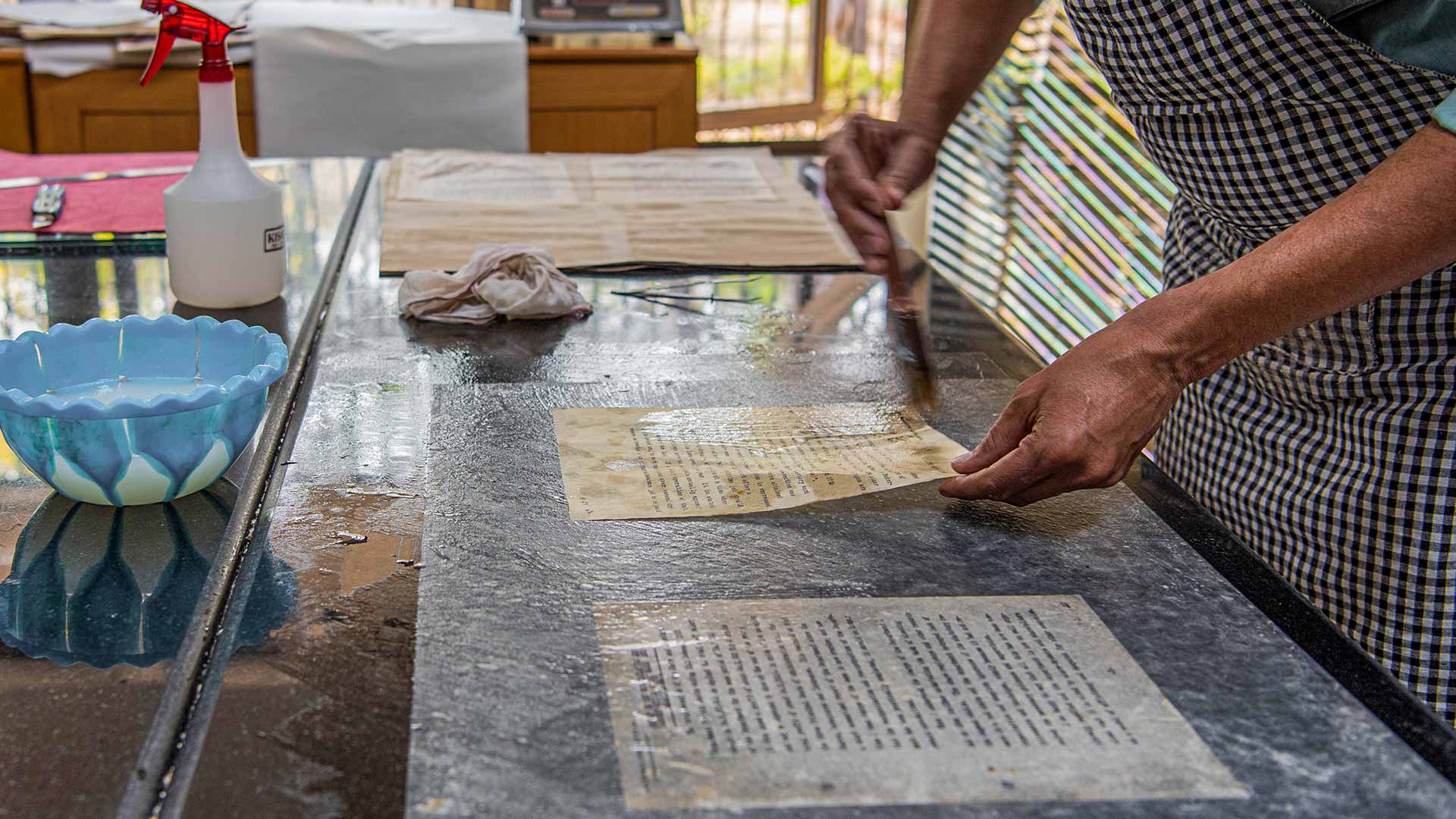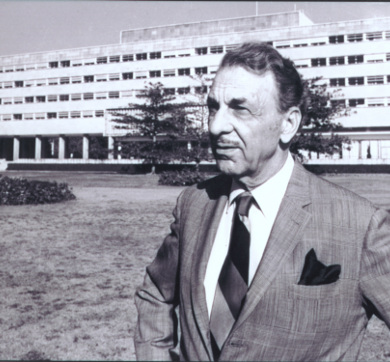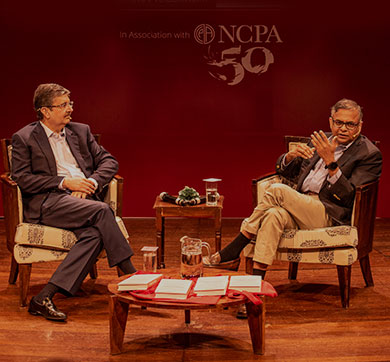October 2022 | 15 photos | 2-minute read
Through this set of images, we document the meticulous process of archiving at the Tata Central Archives in Pune, where important documents like photographs, news clippings and letters amongst others, crucial to the history of the Tata group, are preserved and stored with great care.
The Tata Central Archives (TCA), in its current home within the verdant campus at Pune, opened to the public on March 3rd 2001. It was officially inaugurated by then chairman Ratan N Tata in February the same year.
TCA as an idea for a business archive was first conceptualized in the 1980s by JRD Tata, and propelled forward as a proposal by RM Lala, a well-known chronicler of the Tata group, to be put forth before the board of Tata Sons Limited. With the board’s approval that came through by September 1990, the archive was officially launched in then Bombay (Mumbai) by JRD Tata in January the following year. By 1997, it became a division of Tata Services Limited, functioning out of an office space in Fort, Mumbai, up until 1999 when it was moved to the current Pune facility.
The main focus at TCA in its early days was gathering data from a range of sources like the various Tata companies and personal collections as also newspaper archives. Currently, TCA is home to over 1.6 million Tata related archival records of evidential and historical value which include documents, correspondence, press clippings, photographs, paintings, multimedia collections, awards and medals amongst other memorabilia. Many of these have been transferred by the many Tata companies while some have been acquired from individuals.
TCA is not only India’s first business archive, but also the first to be given the ISO 9001:2000 certificate for its state-of-the-art quality controls and measures. It’s also the first in the country to win the coveted Platinum Rating under the Indian Green Building Council (IGBC) Green Existing Building Operations and Maintenance Rating System.
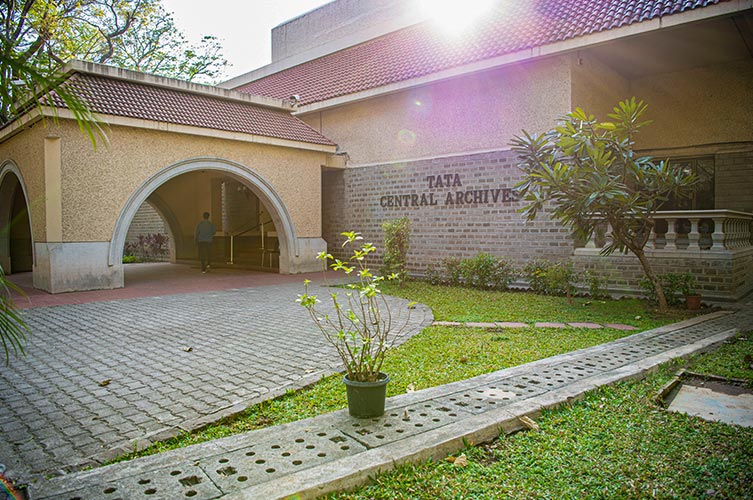
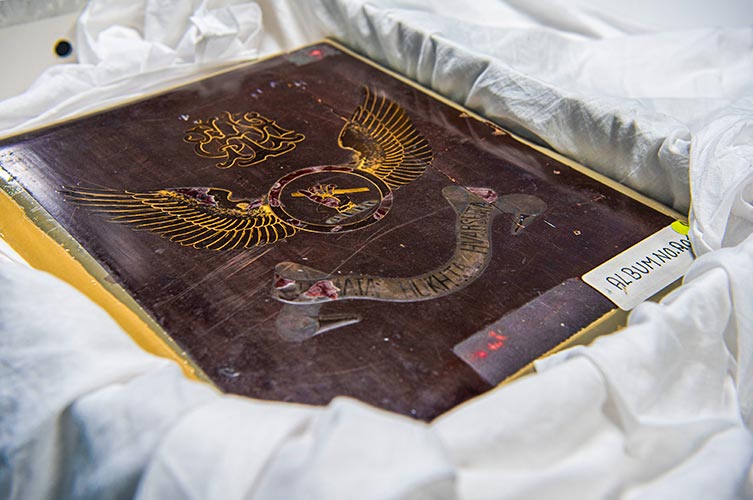
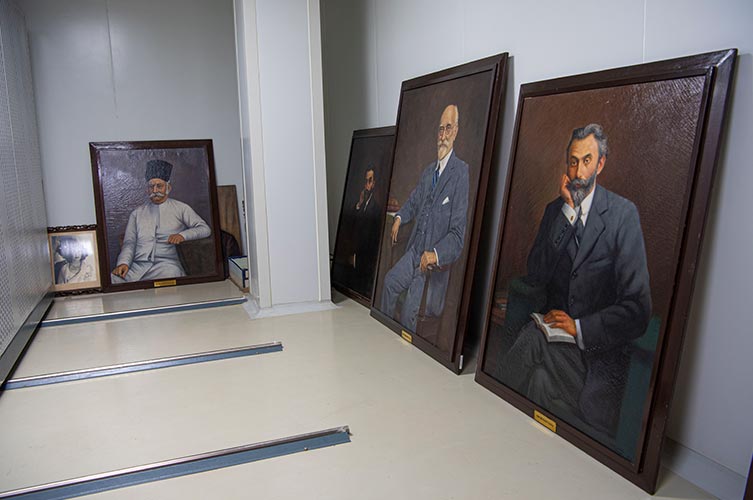
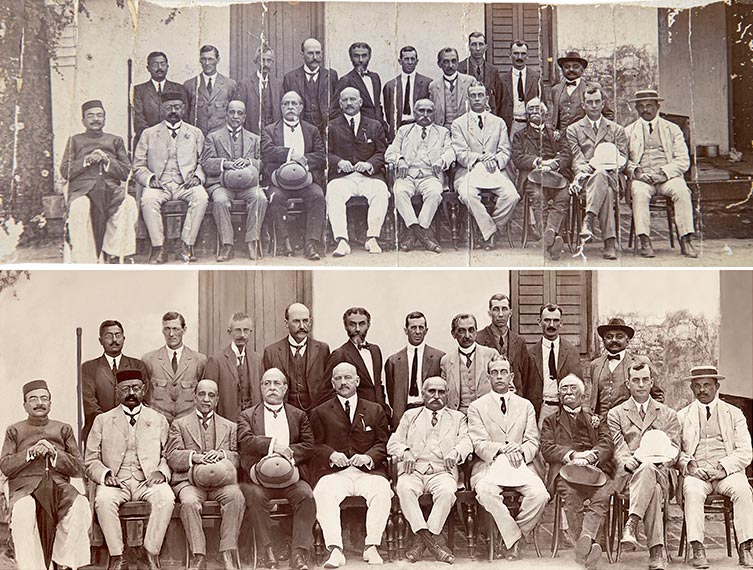
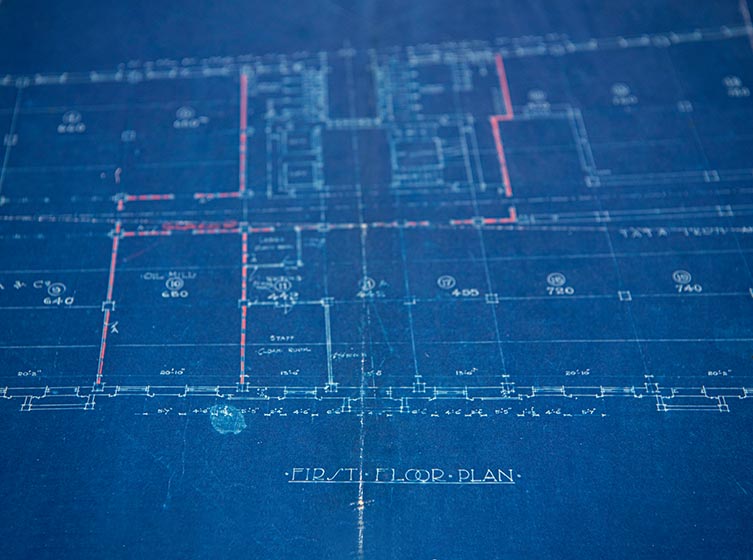
The process of conservation
The first step in the process of conservation begins with the documents being identified and recorded in the Conservation Register. Then the document is scanned or photographed to avoid risk of loss due to unforeseen damages.
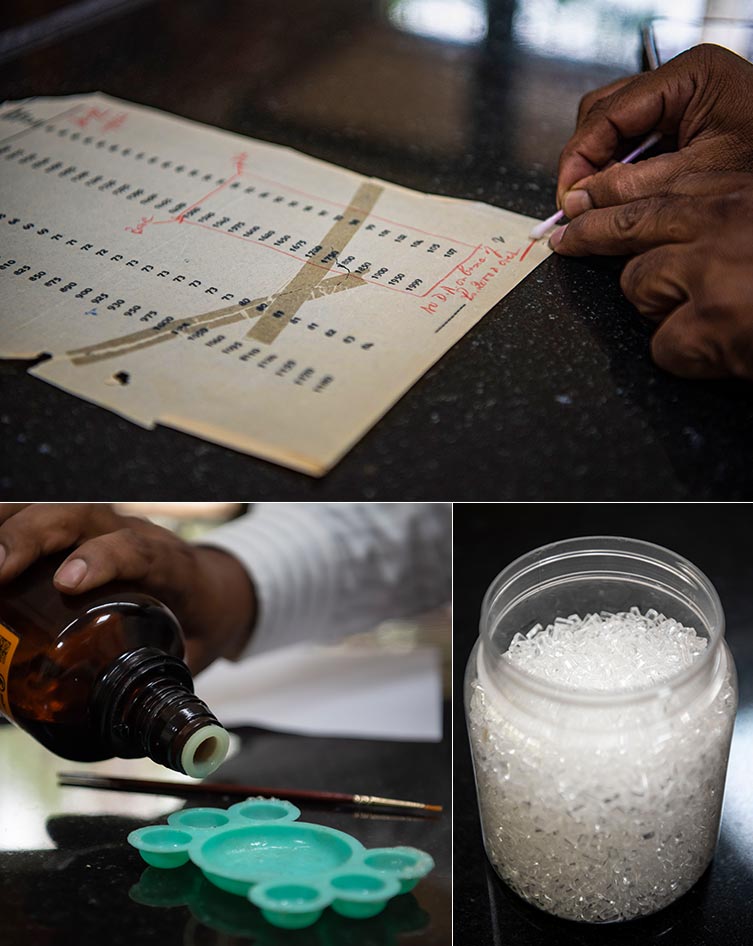
The next step is to check the ink for smudging followed by ink fixing, in case the document has fading ink or ink that runs once its washed over with water. A chemical solution is then applied to the ink so that it retains its original nature.
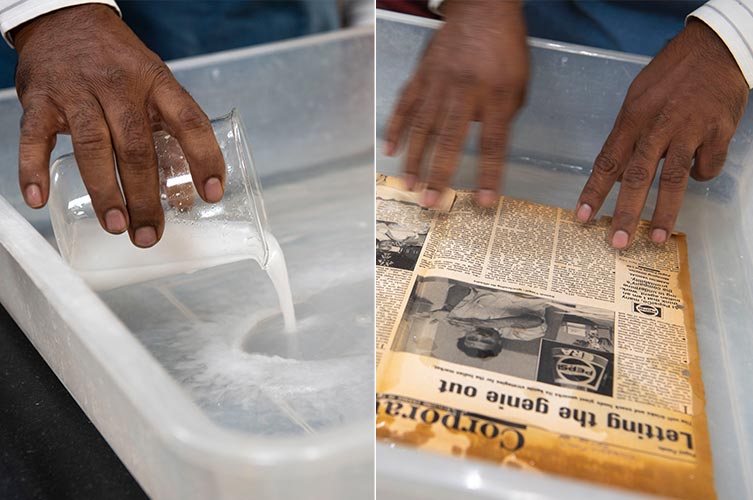
Brown, brittle documents are prone to fall apart, thanks to the acidity levels built over time in them. Deacidification or the checking and regulating of acidity levels is done by submerging the document in a calcium oxide solution. Newspapers, where the paper is of a cheaper quality are more prone to acid damage. The quality of the paper determines the time it needs to remain submerged, till you can spot the oily patches of acid float to the surface. (above and below)

Once the documents have been deacidified, they are dipped through plain water to get rid of the leftover chemicals from the treatment.
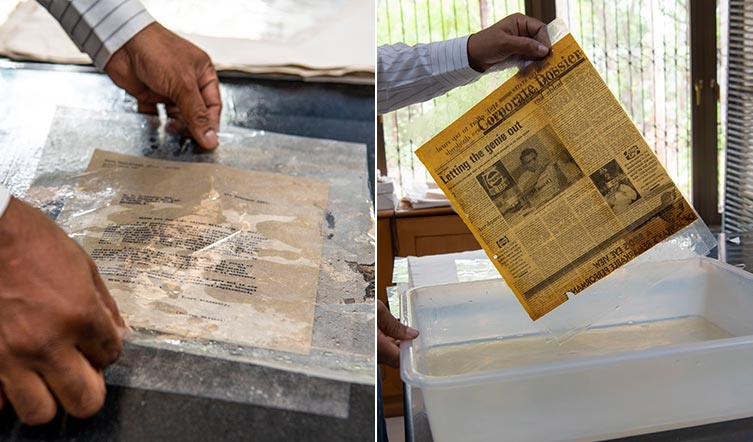
Often these documents are extremely fragile and cannot be handled with bare hands or tongs to lift and move them. This is where the Overhead Projector (OHP) sheets or transparent sheets — a unique range of sheets manufactured using a superior grade of transparent, lightweight sheet — comes in. The document is slid into it so it doesn’t suffer damage when lifted or handled. These sheets are also used as support during the preliminary scanning stages of the process.
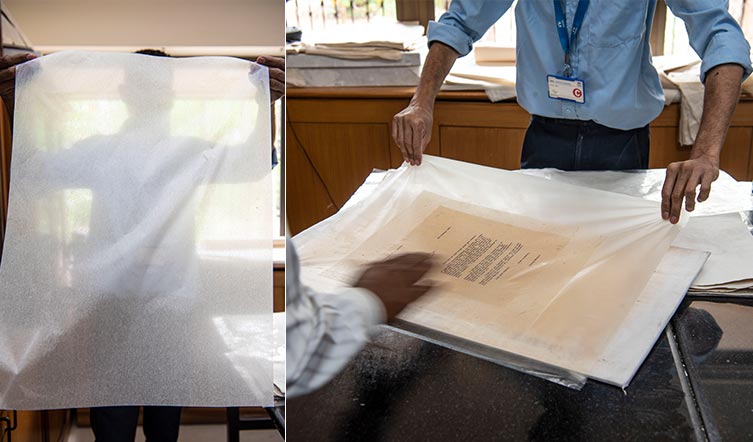
The documents are then lined with acid-free materials depending on the requirement of the document. Common lining papers are the Japanese Tissue or the Banana Tissue.
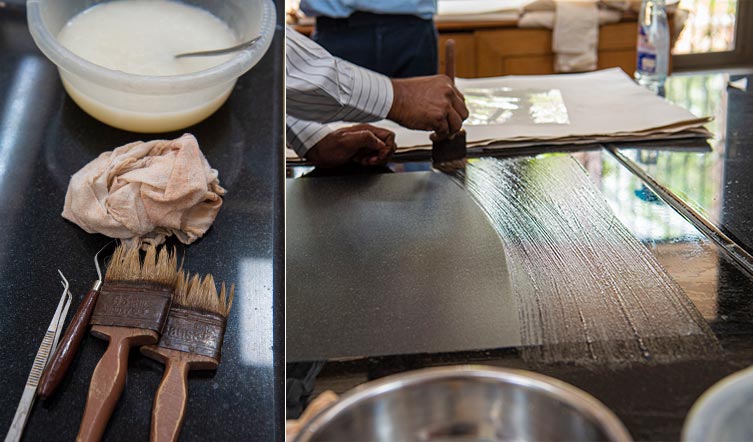
Once the document is placed between the tissues, they are sprayed wet and then a paste of refined flour is spread across it. Once this is dry (a process that can take hours or days depending on the document), the flattening process begins. With this, the process is complete. (above and below)
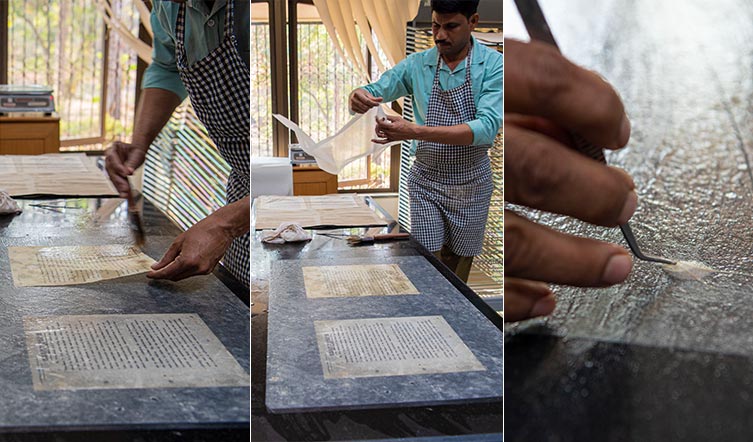
The process of binding
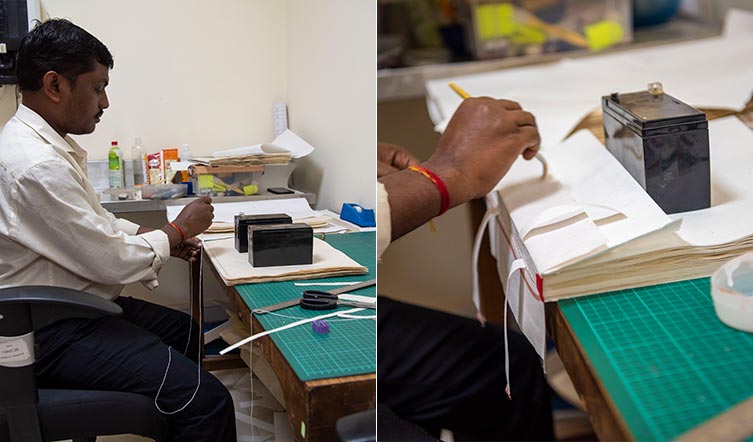
Binding is usually done in the monsoon months when the environment is less conducive for processes like conservation that involves drying of the treated paper. Till date, about 37 books have been bound at the archives post preservation.
Storage
The preserved records are stored in climate-controlled repositories and non-acidic storage materials, maintaining consistent temperature and humidity.
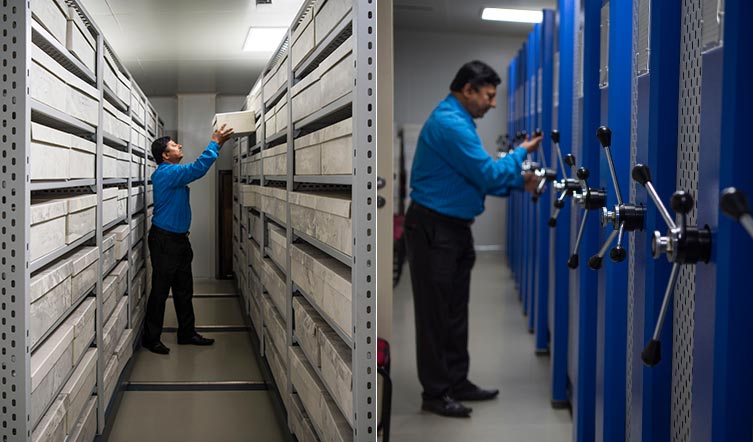
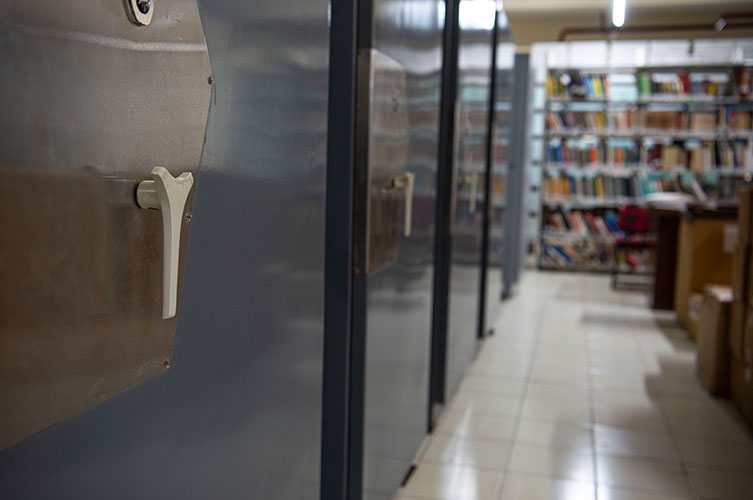
Apart from dedicated servers, a tape library for data backup and compactors to house original records, TCA also has water leak detection systems, fire suppression systems, portable fire extinguishers with clean agents and an efficient security structure with CCTVs and biometric systems to monitor and restrict access. Together, all of these amenities ensure that all records housed with TCA remain safe and secure.
Photos and text by Tejal Pandey




